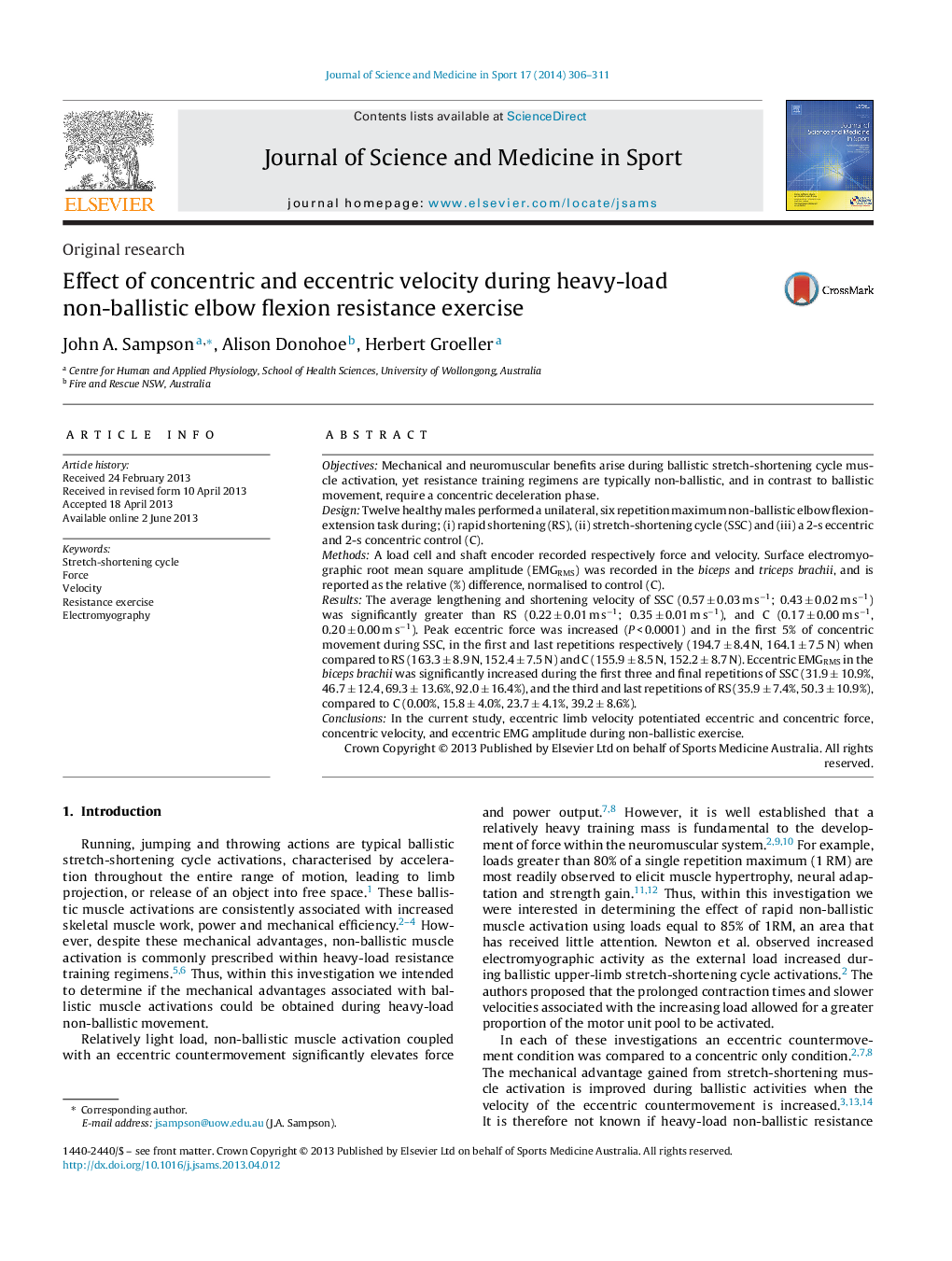| Article ID | Journal | Published Year | Pages | File Type |
|---|---|---|---|---|
| 2707715 | Journal of Science and Medicine in Sport | 2014 | 6 Pages |
ObjectivesMechanical and neuromuscular benefits arise during ballistic stretch-shortening cycle muscle activation, yet resistance training regimens are typically non-ballistic, and in contrast to ballistic movement, require a concentric deceleration phase.DesignTwelve healthy males performed a unilateral, six repetition maximum non-ballistic elbow flexion-extension task during; (i) rapid shortening (RS), (ii) stretch-shortening cycle (SSC) and (iii) a 2-s eccentric and 2-s concentric control (C).MethodsA load cell and shaft encoder recorded respectively force and velocity. Surface electromyographic root mean square amplitude (EMGRMS) was recorded in the biceps and triceps brachii, and is reported as the relative (%) difference, normalised to control (C).ResultsThe average lengthening and shortening velocity of SSC (0.57 ± 0.03 m s−1; 0.43 ± 0.02 m s−1) was significantly greater than RS (0.22 ± 0.01 m s−1; 0.35 ± 0.01 m s−1), and C (0.17 ± 0.00 m s−1, 0.20 ± 0.00 m s−1). Peak eccentric force was increased (P < 0.0001) and in the first 5% of concentric movement during SSC, in the first and last repetitions respectively (194.7 ± 8.4 N, 164.1 ± 7.5 N) when compared to RS (163.3 ± 8.9 N, 152.4 ± 7.5 N) and C (155.9 ± 8.5 N, 152.2 ± 8.7 N). Eccentric EMGRMS in the biceps brachii was significantly increased during the first three and final repetitions of SSC (31.9 ± 10.9%, 46.7 ± 12.4, 69.3 ± 13.6%, 92.0 ± 16.4%), and the third and last repetitions of RS (35.9 ± 7.4%, 50.3 ± 10.9%), compared to C (0.00%, 15.8 ± 4.0%, 23.7 ± 4.1%, 39.2 ± 8.6%).ConclusionsIn the current study, eccentric limb velocity potentiated eccentric and concentric force, concentric velocity, and eccentric EMG amplitude during non-ballistic exercise.
